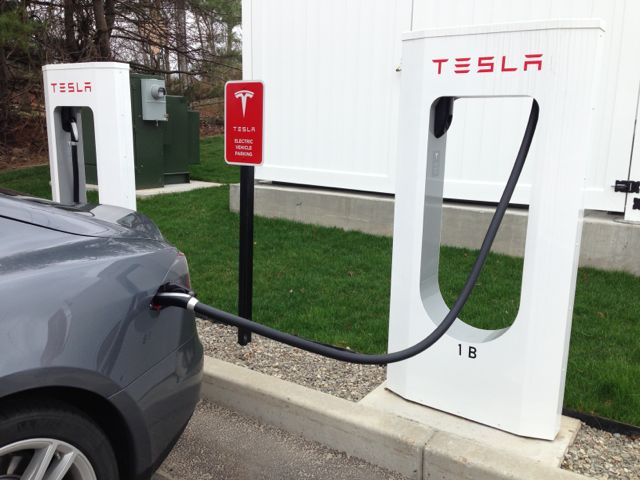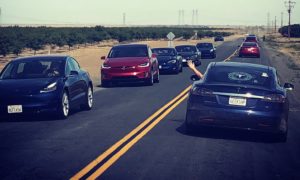

Lifestyle
A Guide to Planning a Tesla Road Trip
Prior to taking delivery of my Model S I was the guy who suffered from incessant thoughts of range anxiety, which soon disappeared as I grew into my ownership experience. I charge daily to 90% in my 85 kWh Model S and drive about 100 miles a day commuting, running errands, etc. I return home with about 140 miles of range left every day which is enough to do it all again without charging. There have been a few longer round trips where I did about 180 miles round trip, and one intentional (but not required) visit to a Supercharger, but none of my trips have required charging en-route or at the destination. As the end of summer approaches I intend on taking two Tesla road trips – one to New Jersey, about an hour east of NYC, and another road trip taking me one hour northeast of Pittsburgh. The New Jersey trip will be taking place this week hence it’s the subject this post. The Tesla road trip to PA will be the subject for of a future post.
Tesla Road Trip Planning
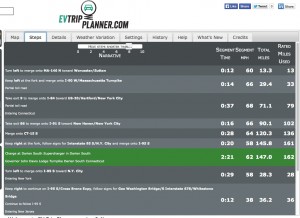 The first thing to consider is the overall distance of your road trip. With any trip, there are a few routes that one could take, and in my case it’s approximately a 244 mile journey to my destination. If I range charge, I’d have 265 miles of rated range which is merely a prediction of how far I could travel based on many assumptions. It’s not representative of the actual miles that can be driven. Rated miles do not take into account terrain, traffic, air conditioning, pit stops/detours etc. Using EVTripPlanner I determined that I’d likely need a charge along the way just so I can have a safety margin.
The first thing to consider is the overall distance of your road trip. With any trip, there are a few routes that one could take, and in my case it’s approximately a 244 mile journey to my destination. If I range charge, I’d have 265 miles of rated range which is merely a prediction of how far I could travel based on many assumptions. It’s not representative of the actual miles that can be driven. Rated miles do not take into account terrain, traffic, air conditioning, pit stops/detours etc. Using EVTripPlanner I determined that I’d likely need a charge along the way just so I can have a safety margin.
Assuming I leave with a 90% state of charge, I’ll need to charge after depleting 160-190 rated miles just so I can maintain a comfortable buffer. Experienced Tesla road trip veterans are probably much better at estimating the amount of buffer needed based on time of year and weather conditions.
RELATED:
- Top 5 Lessons from a First Tesla Road Trip
- Tesla Road Trip Battery Range Planning
- Reasons to Have a Tesla Tire Repair Kit and 2nd UMC
The next thing I researched are the number of Supercharger locations along my route. There are a many ways of doing this, so I’ll just mention two:
- Google maps – Enter your start and end addresses and then type “Supercharger” and have Google find Superchargers on the map along your route. Pick a good one (or more if needed) as waypoints.
- EVTripPlanner.com – This is a useful EV trip planning site put together by an enterprising 16 year old. Enter your start and destination addresses, select the type of car you’ll be using, and click the “Route through Superchargers” button. This will guide you to your destination through routes that have access to Tesla Superchargers. It’s not perfect and it can add more pit stops than needed so be sure to validate the results and adjust accordingly.
I used EVTripPlanner and found that while it wanted me to stop at both the Milford and Darien, Connecticut Superchargers, I technically would still have plenty of range and be able to skip Milford. From my home to the Darien Supercharger it’s 147 miles but EVTripPlanner estimates 161 rated miles needed. Considering we’re charged to 90% (240 miles), we’ll have plenty of buffer to fulfill the 1st leg at 147 miles.
How Much Charge Do I Need?
The rate of charge in an EV taper offs quickly as it approaches a 100% state of charge. This may add a significant amount of time to your charge. Also EVs charge faster from near empty than they do from half full. When you look at charge times and rates on Tesla’s site, those are generally based on ideal conditions assuming you’re using the latest Supercharger technology and you’re not splitting the charge with someone else that’s in the same Supercharger bank.
ALSO SEE: Top 5 Lessons Learned from a First Tesla Road Trip
In summary, I start with 240 rated miles on a 90% charge. I drive to the Darien Supercharger and use 161 rated miles. I have 79 miles of rated range left. Not enough to get me to my destination hence the reason for my stop. EVTripPlanner estimates 93 miles needed with no safety factor. Safety factors are generally added to standard (not rated) mileage. I need to add some safety factor so lets take the 2/3 approach. 93 x 3/2 = 140 miles of rated range needed to arrive at my destination. So I need to add 61 miles of rated range at the Supercharger to get to my destination and still have a good safety margin.
Tesla claims 170 miles of rated range added in 30 minutes, but as we’ve mentioned above they might be overly optimistic with this. Even so, planning for a 30 minute stop is very reasonable.
Destination Charging
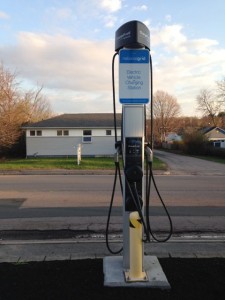 Unless you’ve “gifted” a charger setup to the people you’re visiting (several have done this), you’re likely to find some poor charging stations at the destination (if any at all). I’ve accepted the fact that the best charge I’ll probably get (at my destination) is from a 110V 15A plug that adds about three miles of rated range per hour.
Unless you’ve “gifted” a charger setup to the people you’re visiting (several have done this), you’re likely to find some poor charging stations at the destination (if any at all). I’ve accepted the fact that the best charge I’ll probably get (at my destination) is from a 110V 15A plug that adds about three miles of rated range per hour.
I’ll definitely poke around when I get there to see if I can find a better charging station / wall outlet, but nevertheless I need to plan for the worst. If I charge the minimum at the Supercharger to get to 140 miles of rated range, drive and use the estimated 102 miles of rated range i’ll arrive at my destination with 38 miles of rated range left. On the way home I need to go back the same route and I need that 140 miles of rated range for the distance plus safety. Oops — I can’t get home.
So I need to add 102 miles of rated range while i’m there. More if I plan on doing things with my car while I’m there like showing it off with test drives, going to dinner, etc. Lets say I need 50 miles to use while I’m there, plus the 140 to get back to the Supercharger. I need to add 152 miles of rated range. At a charge rate of 3 miles/hour, it’ll take approximately 51 hours of charging to regain 153 miles of rated range.
Options:
- Find a Supercharger near my destination – NJ only has one and its more than an hour away. No good.
- Find a faster charger nearby – A local college has a J1772 reported at 30A/240V which would give 18miles rated/hour added. But I’d have to leave my car there or sit there for the charge. Better, but not great.
- Charge more at my Supercharger stop on the way down and arrive with more left.
Charging up more at the Supercharger seems like it would be the best option. I’ll charge back up to 90% (240 rated miles), use 102 rated miles to get to my NJ destination and have 138 rated miles left. If I don’t go anywhere while there, that leaves me with plenty of charge to get back along with a safety margin. If I want to drive around while I’m there, I figured an additional 50 miles of charge will suffice which equates to 16 hours of charging (from a wall outlet) or two overnights. That’s doable.
Planning Complete
The return trip home should be pretty uneventful assuming I did all of my Tesla road trip planning correctly. One last thing to consider is detours along the way. On our way down to NJ we pass by a favorite Sushi place we like to visit in CT. The restaurant is a bit off route and will add a couple miles so I planned for this as well.
I also considered the unlikely scenario where the Darien, CT supercharger was offline when I arrived. What would I do? Fortunately there’s another one on the Northbound side of I-95 and then another only a few miles away on the Merritt parkway. Unlike MA and NJ, CT is pretty blessed with Superchargers!
This will be my first real EV road trip. Relative to the the epic 12,000 mile Tesla road trip taken by the Recargo folks, and many others that are happening daily, mine will be tiny but just as fun. As a new owner that still occasionally struggles with range anxiety, it has been an eye-opening experience having to think about options and and fall back plans – things I never once thought about in an ICE car. A Tesla road trip takes a little more planning. Thanks to the growing Supercharger network “filling up” my Tesla along the way is a minor inconvenience. Oh, and did I mention that using the Tesla Supercharger is free for life?
Tags: road trip, battery
Elon Musk
X account with 184 followers inadvertently saves US space program amid Musk-Trump row
Needless to say, the X user has far more than 184 followers today after his level-headed feat.
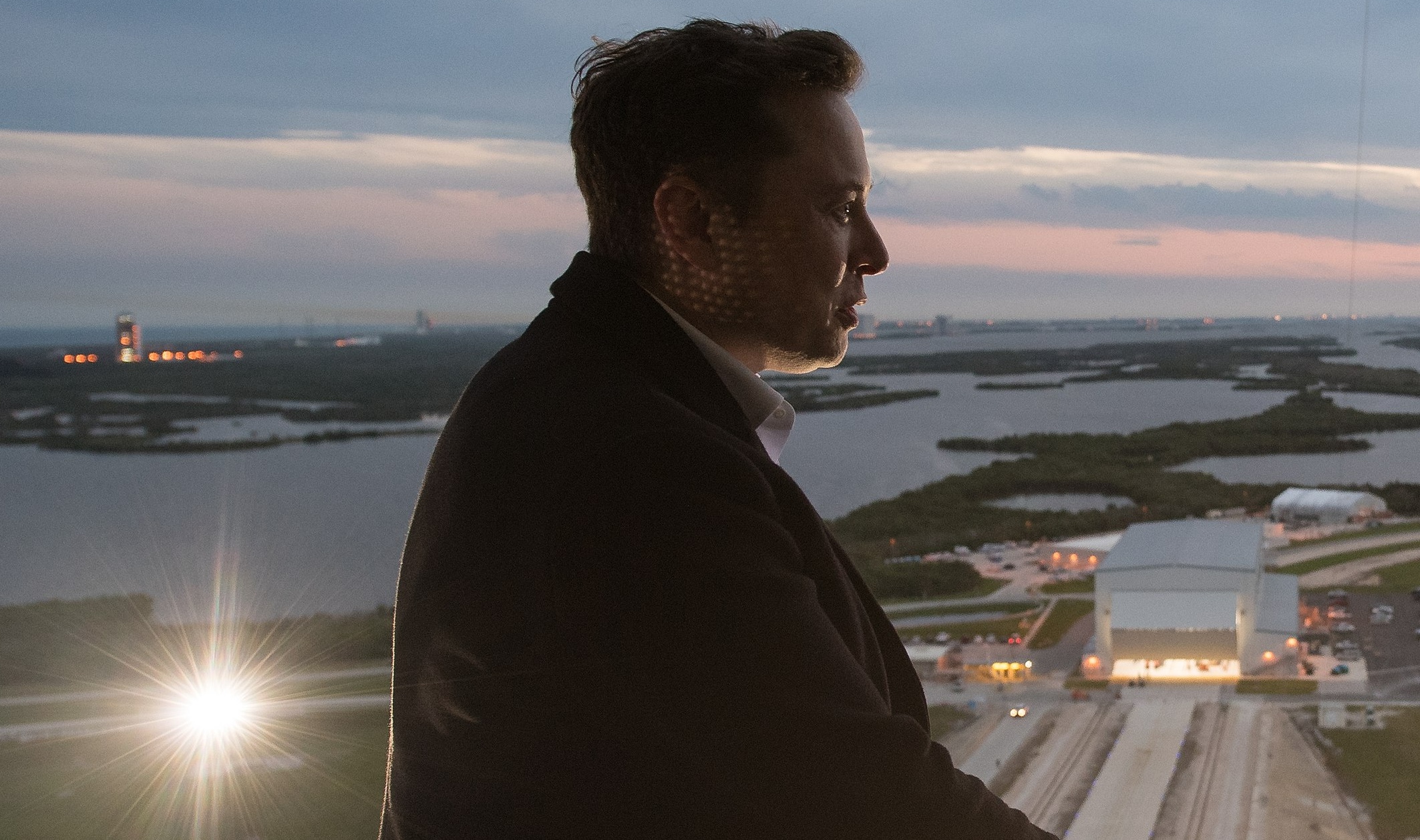
An X user with 184 followers has become the unlikely hero of the United States’ space program by effectively de-escalating a row between SpaceX CEO Elon Musk and President Donald Trump on social media.
Needless to say, the X user has far more than 184 followers today after his level-headed feat.
A Near Fall
During Elon Musk and Donald Trump’s fallout last week, the U.S. President stated in a post on Truth Social that a good way for the United States government to save money would be to terminate subsidies and contracts from the CEO’s companies. Musk responded to Trump’s post by stating that SpaceX will start decommissioning its Dragon spacecraft immediately.
Musk’s comment was received with shock among the space community, partly because the U.S. space program is currently reliant on SpaceX to send supplies and astronauts to the International Space Station (ISS). Without Dragon, the United States will likely have to utilize Russia’s Soyuz for the same services—at a significantly higher price.
X User to the Rescue
It was evident among X users that Musk’s comments about Dragon being decommissioned were posted while emotions were high. It was then no surprise that an X account with 184 followers, @Fab25june, commented on Musk’s post, urging the CEO to rethink his decision. “This is a shame this back and forth. You are both better than this. Cool off and take a step back for a couple days,” the X user wrote in a reply.
Much to the social media platform’s surprise, Musk responded to the user. Even more surprising, the CEO stated that SpaceX would not be decommissioning Dragon after all. “Good advice. Ok, we won’t decommission Dragon,” Musk wrote in a post on X.
Not Planned, But Welcomed
The X user’s comment and Musk’s response were received extremely well by social media users, many of whom noted that @Fab25june’s X comment effectively saved the U.S. space program. In a follow-up comment, the X user, who has over 9,100 followers as of writing, stated that he did not really plan on being a mediator between Musk and Trump.
“Elon Musk replied to me. Somehow, I became the accidental peace broker between two billionaires. I didn’t plan this. I was just being me. Two great minds can do wonders. Sometimes, all it takes is a breather. Grateful for every like, DM, and new follow. Life’s weird. The internet’s weirder. Let’s ride. (Manifesting peace… and maybe a Model Y.)” the X user wrote.
Lifestyle
Tesla Cybertruck takes a bump from epic failing Dodge Charger
The Cybertruck seemed unharmed by the charging Charger.
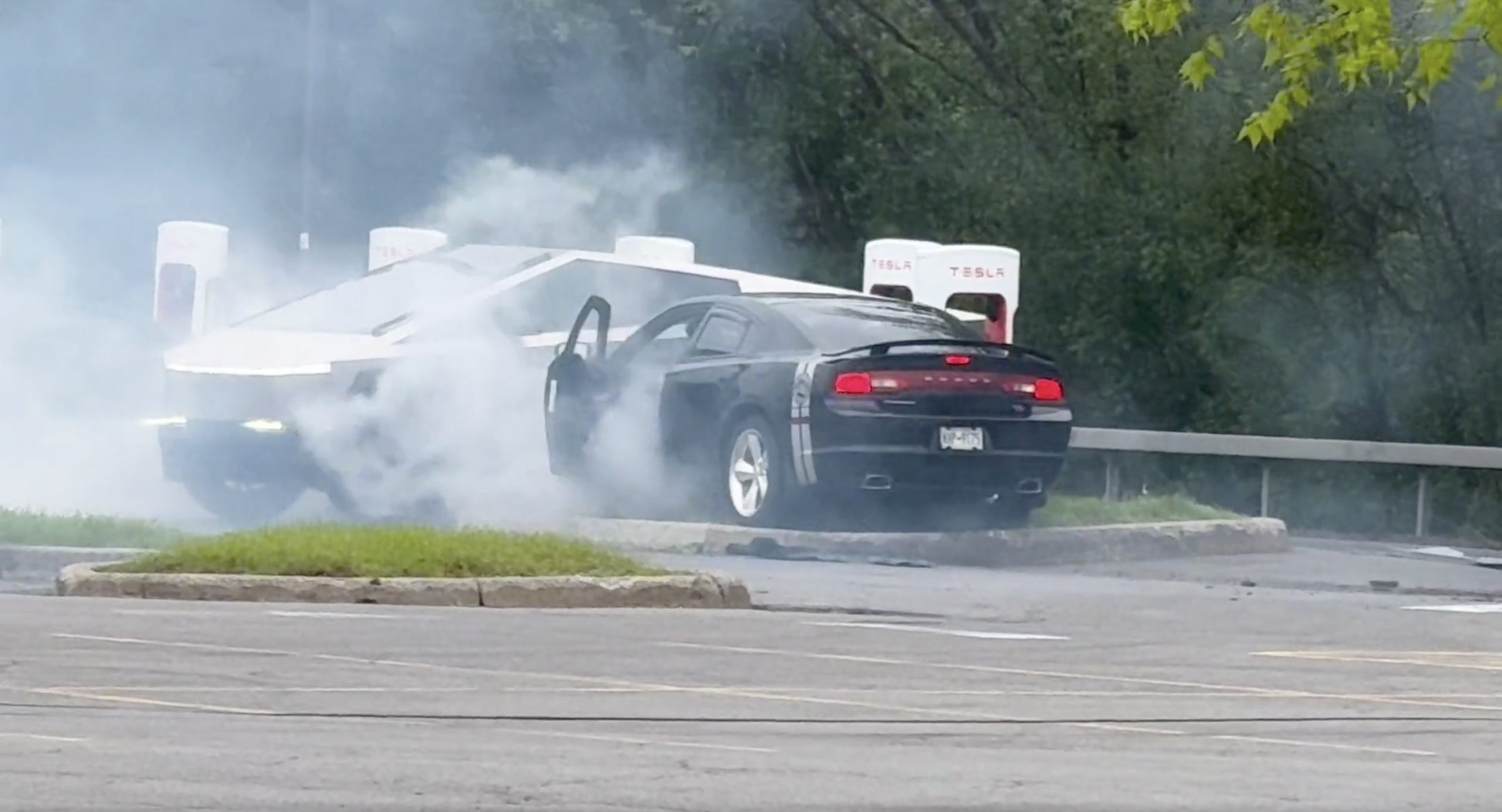
There comes a time in a driver’s life when one is faced with one’s limitations. For the driver of a Dodge Charger, this time came when he lost control and crashed into a Tesla Cybertruck–an absolute epic fail.
A video of the rather unfortunate incident was shared on the r/TeslaLounge subreddit.
Charging Charger Fails
As could be seen in the video, which was posted on the subreddit by Model Y owner u/Hammer_of_something, a group of teens in a Dodge Charger decided to do some burnouts at a Tesla Supercharger. Unfortunately, the driver of the Charger failed in his burnout or donut attempt, resulting in the mopar sedan going over a curb and bumping a charging Cybertruck.
Ironically, the Dodge Charger seemed to have been parked at a Supercharger stall before its driver decided to perform the failed stunt. This suggests that the vehicle was likely ICE-ing a charging stall before it had its epic fail moment. Amusingly enough, the subreddit member noted that the Cybertruck did not seem like it took any damage at all despite its bump. The Charger, however, seemed like it ran into some trouble after crashing into the truck.
Alleged Aftermath
As per the the r/TeslaLounge subreddit member, the Cybertruck owner came rushing out to his vehicle after the Dodge Charger crashed into it. The Model Y owner then sent over the full video of the incident, which clearly showed the Charger attempting a burnout, failing, and bumping into the Cybertruck. The Cybertruck owner likely appreciated the video, in part because it showed the driver of the Dodge Charger absolutely freaking out after the incident.
The Cybertruck is not an impregnable vehicle, but it can take bumps pretty well thanks to its thick stainless steel body. Based on this video, it appears that the Cybertruck can even take bumps from a charging Charger, all while chilling and charging at a Supercharger. As for the teens in the Dodge, they likely had to provide a long explanation to authorities after the incident, since the cops were called to the location.
Lifestyle
Anti-Elon Musk group crushes Tesla Model 3 with Sherman tank–with unexpected results
Ironically enough, the group’s video ended up highlighting something very positive for Tesla.

Anti-Elon Musk protesters and critics tend to show their disdain for the CEO in various ways, but a recent video from political action group Led By Donkeys definitely takes the cake when it comes to creativity.
Ironially enough, the group’s video also ended up highlighting something very positive for Tesla.
Tank vs. Tesla
In its video, Led By Donkeys featured Ken Turner, a 98-year-old veteran who served in the British army during World War II. The veteran stated that Elon Musk, the richest man in the world, is “using his immense power to support the far-right in Europe, and his money comes from Tesla cars.”
He also noted that he had a message for the Tesla CEO: “We’ve crushed fascism before and we’ll crush it again.” To emphasize his point, the veteran proceeded to drive a Sherman tank over a blue Tesla Model 3 sedan, which, of course, had a plate that read “Fascism.”
The heavy tank crushed the Model 3’s glass roof and windows, much to the delight of Led By Donkeys’ commenters on its official YouTube channel. But at the end of it all, the aftermath of the anti-Elon Musk demonstration ended up showcasing something positive for the electric vehicle maker.
Tesla Model 3 Tanks the Tank?
As could be seen from the wreckage of the Tesla Model 3 after its Sherman encounter, only the glass roof and windows of the all-electric sedan were crushed. Looking at the wreckage of the Model 3, it seemed like its doors could still be opened, and everything on its lower section looked intact.
Considering that a standard M4 Sherman weighs about 66,800 to 84,000 pounds, the Model 3 actually weathered the tank’s assault really well. Granted, the vehicle’s suspension height before the political action group’s demonstration suggests that the Model 3’s high voltage battery had been removed beforehand. But even if it hadn’t been taken off, it seemed like the vehicle’s battery would have survived the heavy ordeal without much incident.
This was highlighted in comments from users on social media platform X, many of whom noted that a person in the Model 3 could very well have survived the ordeal with the Sherman. And that, ultimately, just speaks to the safety of Tesla’s vehicles. There is a reason why Teslas consistently rank among the safest cars on the road, after all.
-

 Elon Musk3 days ago
Elon Musk3 days agoTesla investors will be shocked by Jim Cramer’s latest assessment
-

 News1 week ago
News1 week agoTesla Robotaxi’s biggest challenge seems to be this one thing
-

 News2 weeks ago
News2 weeks agoTexas lawmakers urge Tesla to delay Austin robotaxi launch to September
-

 Elon Musk2 weeks ago
Elon Musk2 weeks agoFirst Look at Tesla’s Robotaxi App: features, design, and more
-

 Elon Musk2 weeks ago
Elon Musk2 weeks agoxAI’s Grok 3 partners with Oracle Cloud for corporate AI innovation
-

 News2 weeks ago
News2 weeks agoSpaceX and Elon Musk share insights on Starship Ship 36’s RUD
-

 News2 weeks ago
News2 weeks agoWatch Tesla’s first driverless public Robotaxi rides in Texas
-

 News2 weeks ago
News2 weeks agoTesla has started rolling out initial round of Robotaxi invites

